As preppers, we are always looking for ways to better our chances of survival, but one aspect that is severely overlooked is self-defense.
There are many courses directed at the self-defense craze and some of them are even ‘tailored’ for the preppers. Some of these classes are terrible, while others are a fountain of practical knowledge that can help you in your journey prepping.
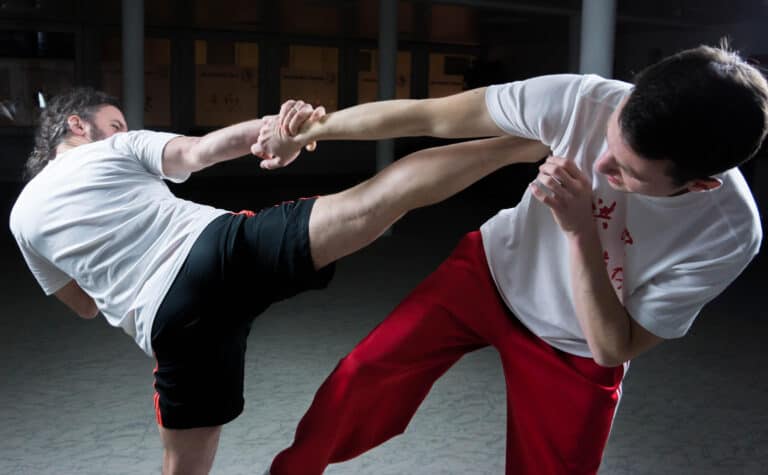
Finding the right self-defense class can be daunting at first. But, within this article, you will find the questions you should ask yourself, and the questions you need to ask your potential instructor.
Following these guidelines and questions will help you in your journey in finding the best martial arts that suits you, and give you the confidence to find the gym and instructor that will help you learn how to defend yourself.
Table of Contents
Asking The Right Questions
When you dive into the world that is martial arts, you will quickly learn that there are as many styles and ‘sub-styles’ as there are languages in the world. All styles have their merits – albeit some less so than others – and they all have disadvantages as well.
Just like languages, they are all an expression of who you are and finding the one that best suits your needs and desires will benefit you considerably compared to one that you may not be sure of, or one that you are not even interested in.
So you need to ask yourself some questions before you even begin your search.
Do you wish to be more offensive in your approach?
Or do you prefer to be defensive and counter your opponent?
Some styles focus on purely defensive reactions and others that will focus primarily on striking and finishing your opponent quickly. Starting with these questions will help you to narrow down your list of potential martial art styles.
A well-rounded fighter will understand both aspects – offense and defense – and a lot of martial art styles incorporate them into their curriculum.
Assuming you are new to martial arts, you will want to focus on defensive techniques first, and most martial arts concentrate on this in the beginning. Think about boxers and how the coach would always tell them, “Keep your hands up!” A strong defense is fundamental to a good fighter. This brings us to the next question.
How do you prefer to fight?
The next question you must ask yourself is how do you prefer to fight? Do you want to learn how to submit someone without throwing a punch? Or do you prefer to throw kicks? Maybe you are traditional in the sense that throwing punches would be the best way for you to learn how to defend yourself.
This is crucial in choosing what will work best for you as joining a Taekwondo class to learn how to throw a punch would be detrimental to your progress as the style focuses more on powerful kicks.(It’s important to note that many methods will incorporate at least two of these fundamentals.)
Knowing how you wish to fight is just as important as knowing if you want to be reactive and defensive, or if you want to focus on being an offensive fighter.
What can you Afford?
The last thing you need to address before your search is your budget. MANY gyms will have eye gouging prices while others are very affordable. Set your budget and try to stick with it as much as possible.
With time and effort, you may find the exact gym and instructor you were looking for at the price you set. Or you might jump into a class that is overpriced and not worth your time. Patience is your friend when finding the right place.
Defensive Styles
Labeling a martial arts defensive can raise some doubts in your mind, but those doubts are quickly dismissed when you see how effective some of these styles can be. The following styles although considered defensive or reactionary techniques can be just as dangerous as any of the offensive styles listed later in this article.
Krav Maga
Krav Maga is listed first because of the potential for preppers to learn how to deal with real life instances that anyone might face. Developed by the Israeli Defense Forces, this martial arts has gained a lot of popularity due to its effectiveness is disabling an opponent quickly. It combines Boxing, Wrestling, Judo, Jujitsu, and Aikido to deal with real life situations that you would face.
It focuses on countering those self-defense situations in such a devastating way that the fight could end in a matter of seconds. This is primarily due to countering an attack and exposing weak or sensitive areas to strikes or putting your opponent in a very uncomfortable or vulnerable position.
A black belt in Krav Maga may be the scariest thing to encounter or get on one’s bad side. They really do aim for all the soft spots with precision.
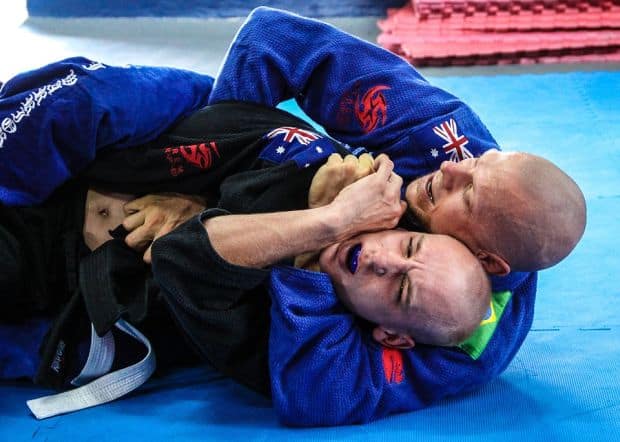
Brazilian Jiu-Jitsu
Developed by the Gracie family from Brazil during their time spent in Japan learning Kodokan judo; this style focuses solely on ground fighting and has coined the term, “Human Chess.”
It has become a need-to-know in the mixed martial arts scene when it became evident in the UFC competition that not knowing how to fight on the ground left you completely vulnerable to those that did.
BJJ does not practice striking in any traditional way, and the only strikes you regularly see from practitioners are strikes to open up an opening to take the opponent to the ground, or while on the ground, strikes to open them up for a submission or to gain a dominant position.
You learn many ways to take your opponent to the ground where you would have an advantage and then proceed to find the best way to end the fight, whether it be a joint lock, choke or submission. If you have the chance to “roll” with someone who has practiced BJJ, take the opportunity and prepare to tap out. It’s a humbling experience.
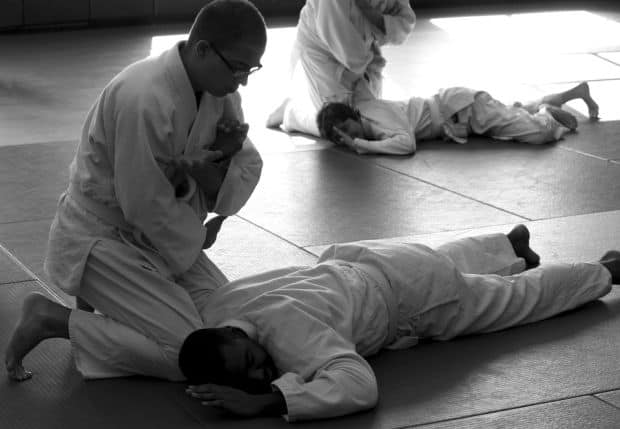
Aikido
Developed in Japan and meaning “The Way of Harmonious Spirit,” this fighting style focuses on entering the attacking space and using your opponent’s moment against them to either toss them or apply a joint lock. One of the fundamentals to Aikido is the well-being of the attacker, and many gyms focus on non-violence.
Unfortunately, that focus on non-violence (as nice as that is), has led some to criticize the style as ineffective and question its validity as a style for self-defense.
It doesn’t exactly help that you have videos like Aikido vs. MMA and others like it all over the internet highlighting the many, many flaws behind the training and philosophy of the style.
With that said, this applies to every style of martial arts – not just Aikido. If trained in a manner that can be applied practically, Aikido can be a very good skillset to have.
This is one of those martial arts that is best used in conjunction with another style; it is still a good style in controlling your opponent and keeping you safe. That is why Aikido elements are found in many other martial art styles.
Hapkido
Founded in Korea by a group of Korean nationals after the end of the Japanese occupation, Hapkido has a few similarities to Japanese Aikido. It’s a style that focuses primarily on body control.
There are five areas of training: striking, kicking, throwing, joint manipulation, and weapon work. These techniques rely mostly on circular movements, momentum, and non-resistance – like Aikido.
Unlike Aikido, however, the striking element is a bit more pronounced in Hapkido. If you’re looking for a style that’s like Aikido but that has a good striking element, then this is a good one to use.
Wrestling
Wrestling is a combat sport that uses a variety of grappling-based tactics. Takedowns, throws, pins, joint locks, and clinch fighting are all staples of the sport. While throws and joint locks can be painful and damaging, they won’t necessarily kill you – because it seldom goes that far. Like Brazilian Jiu Jitsu, wrestling relies on superior body position and a good grip.
Judo
Founded by Jigoro Kano in 1882 as a derivative of Jujutsu, Judo is a style uses throws and joint locks. It focuses on combining gravity and momentum – throwing your opponent around like a ragdoll – and using joint locks to force a submission.
Now, while the name may translate to ‘gentle way’, the style is anything but gentle. The joint locks are painful, and the throws can be devastating when applied outside of the dojo where your falls aren’t cushioned by foam mats.
The S.P.E.A.R. System
Developed by Tony Blauer in Canada in the 1980s (starting in 1982), the S.P.E.A.R. system is a very versatile system which can be learned quickly. SPEAR is an acronym for Spontaneous Protection Enabling Accelerated Response – what a mouthful – and the system is built around turning the natural flinch response into a quick counterattack.
The S.P.E.A.R system’s defensive tactics are admittedly aggressive, but the idea is that you can react and think on the fly, adapting to the situation as required.
Marine Corps Martial Arts Program (MCMAP)
The Marine Corps Martial Arts Program was developed as an upgrade to the LINE system. This preceding system was used by the USMC from 1989 to 1998 but it was noted for having a very inflexible approach to combat – every technique was supposed to kill the other person.
Obviously, this posed a problem, so the Marine Corps drew on Taekwondo, Aikido, Eskrima/Kali, Krav Maga, BJJ, and others and developed MCMAP.
The program utilizes a variety of tactics involving both single and multiple attacker scenarios in a variety of environments and includes the use of throws, takedowns, pins, joint locks, and, of course, striking and kicking.
Technique-wise, things are kept pretty simple which makes it a fairly easy system to learn – if you’re in good shape – and gives you a wide enough arsenal to be both offensive and defensive depending on the situation.
Offensive Styles
If you have decided to take a more aggressive approach, you have many options at your disposal. Some will be more dedicated to striking, while others will be more devoted to kicks. Either way, those listed within this section are fighting styles oriented around striking hard and fast.
Taekwondo
This martial arts style was developed in Korea in the 1940s and 1950s. It is a mix of traditional Korean martial arts, Japanese karate, and elements of Chinese martial arts. Taekwondo focuses primarily on kicking techniques that are generally aimed for the head.
This style can be devastating due to the amount of force one can generate from a kick, and it’s not uncommon to see one kick knockouts in Taekwondo tournaments even though they wear protective gear.
To master this style you need to be in excellent shape as a lot of the advanced kicks require spinning and jumping to generate more force in the kick.
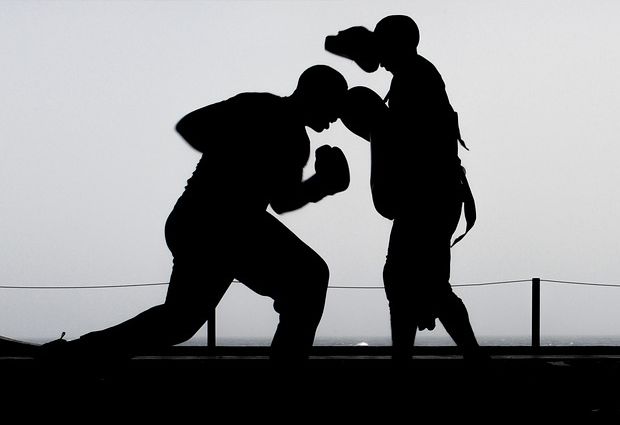
Boxing
The polar opposite to Taekwondo and one most are familiar with; Boxing has been around in some form ever since humans began fighting. Part of the Olympic games of Ancient Greece, it has become the staple for many in regards to self-defense.
It is focused solely on throwing combinations of punches while moving your head to avoid punches and keeping your fist up close to the face for protection as well.
If you are thinking about boxing, you shouldn’t have a problem finding a gym and trainer. The boxing gym is notorious for throwing amateurs against more seasoned boxers so be aware of this. Sparring someone better than you is how you get better. Just don’t allow it to devolve into bullying.
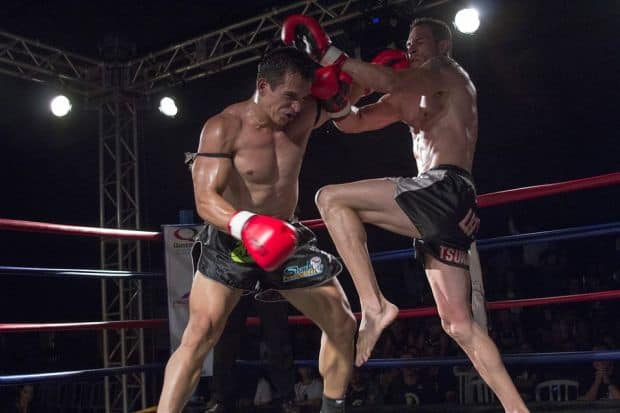
Muay Thai
Muay Thai is a blend of boxing, clinching, knees, elbows, and kicks. Because they use the fists, elbows, knees, and shins, it is called “The Art of Eight Limbs.” This martial arts is truly terrifying when you see a professional match.
Striking with the shins to the knees can cause dislocation and swelling that will cripple an opponent quickly. While the elbow being one of the stronger bones in your body can cause havoc when connecting anywhere to the head.
The most famous technique from this style is undoubtedly the Muay Thai clinch. This clinch is a doubled handed hold to the back of the opponent’s head giving you leverage to land devastating knees to the face.
This fighting style is one of the most brutal and efficient martial arts when it comes to striking.
Karate
Originally developed in Okinawa and brought to Japan in the early 1920s, Karate is a striking art that utilizes punches, kicks, and knee and elbow strikes with a wide range of blocks.
There are some similarities between Karate and Taekwondo, but the primary difference is the approach to training. Where, Taekwondo focuses on kicking, Karate is a striking-focused art with some styles going for full contact, bare knuckle sparring.
If you want to fight with someone, a karate black belt is probably not the guy you want to mess with.
Lethwei
Originating in what is now called Myanmar, Lethwei is a form of bareknuckle boxing which is also colloquially called the art of nine limbs.
The art makes use of the fighter’s knees, shins, fists/feet, and Elbows – like Muay Thai – and includes the ability to headbutt your opponent (this is the ninth limb). These striking tactics – apart from headbutting – draw frequent comparisons with Muay Thai.
The style is very effective and very dangerous with fights often resulting in serious brain injuries and fractures which can, in some cases, be fatal.
S.C.A.R.S. System Special Combat Accelerated Response System or S.C.A.R.S. is the proverbial little brother of the S.P.E.A.R. System. It started in 1988 and was initially only practiced by military and government personnel before being opened to the public in 1993.
The system is built on the theory that everyone reacts the same way to specific injuries and techniques are aimed at specific parts of the body. The idea being to provoke a reaction which you can use to your advantage.
It doesn’t sound like much – let’s be honest, a kick to the groin or the gut is going to hurt and anyone can execute them. Much like it’s older sort-of relative, the S.C.A.R.S. system is designed with simplicity and ease of use in mind which makes it a good system to learn if you need to learn quickly.
What to Ask Your Potential Instructor
You have decided on a fighting style, found a gym, and now it’s time to meet the instructor/s. What should you ask them?
What is the Price and Demographic?
If it hasn’t been explained already, you will want to ask about the price for classes, and you need to find out the demographic of the class. This means finding out how many beginner and advanced students are in the class.
You will want to find a class that has a healthy number of beginners and a few advanced students. Most gyms do this, but if you find a class with too many advanced students see if you can find another class with the same instructor that meets these needs.
Having a few advanced students helps the instructor with the beginner students, but too many usually means that you will be learning advanced techniques that are hard to perform or learn, or worse, hold back a class from learning because you need extra instructions.
How Does Sparring Work?
The next thing you want to ask your potential instructor about is sparring. How do they usually go about sparring? Do you wear protective gear? Do you referee sparring matches? What are the rules to sparring?
Knowing these things before joining a gym can save you a headache. Literally. Some gyms are vicious about sparring, while others are more practical and have protocols in place for sparring.
The last question you definitely want to ask your potential instructor is their credentials. How long have they been practicing this form? How long have they been teaching? Most instructors will also allow you to sit in during class to see how the class goes. If you get a chance to do this, it is the best way to understand what kind of instructor you are getting and what kind of class they give.
Any other questions that you feel are relevant you shouldn’t hesitate to ask before making an investment into their gym. But, these questions are a must ask for all instructors to ensure your safety and your wallet.
Final Thoughts
One martial art style that was overlooked – on purpose – was Mixed Martial Arts (MMA). This one, like some others listed in this article, is a mix of multiple styles and are usually capable of developing a more rounded fighter. If you have a MMA, Krav Maga, or Muay Thai gym near you; it’s encouraged to visit these first due to the fact that you can become a more well-rounded fighter.
Whatever style you prefer, they all have their benefits, and they all are dangerous with someone seasoned in the practice. Many of these listed seem to be tailor made for preppers, while others can be laughed at first glance.
The big takeaway is this: you need a little bit of skill for those rare yet possible hand to hand combat situations, and any one of these martial arts will help.
All of the styles listed have practical applications that can help you become more prepared for what the future may bring. So use this article as a guide to find out what you prefer and find the instructor that works best for you.
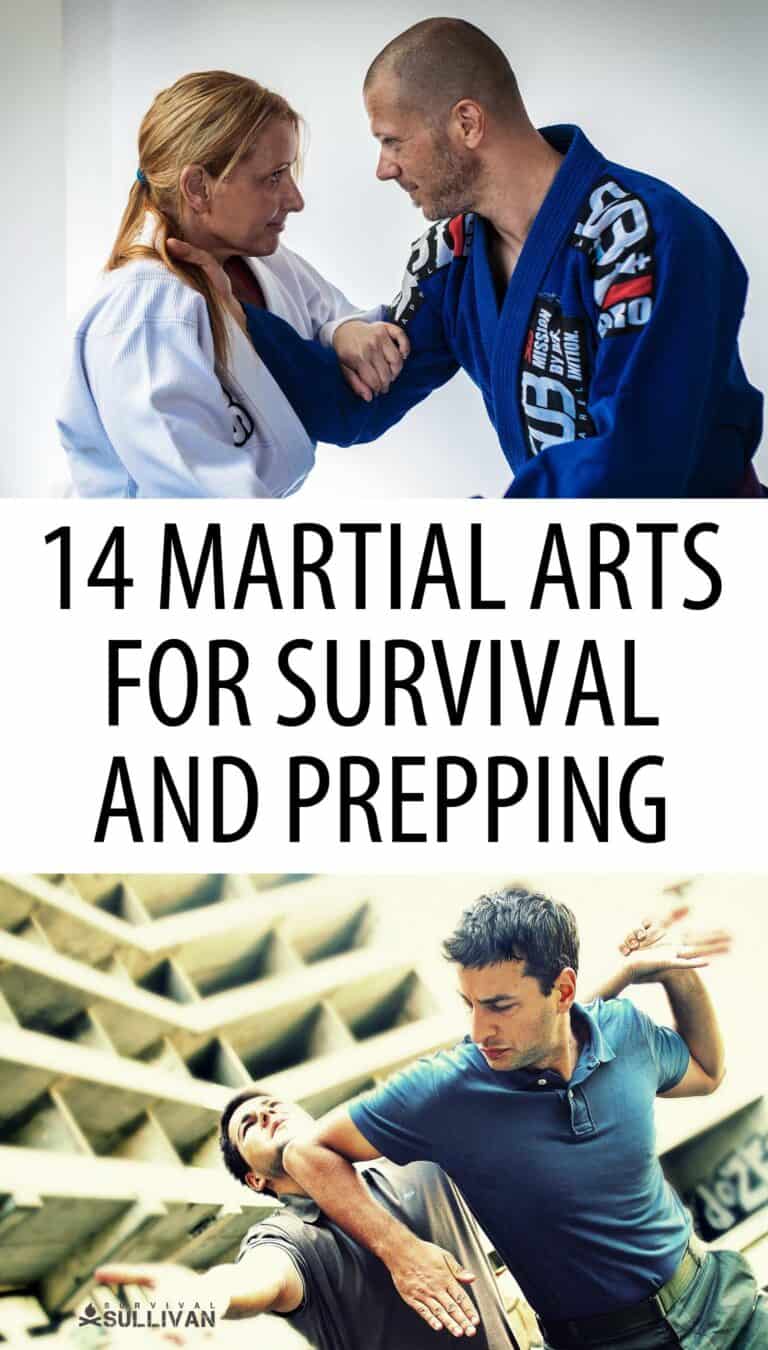
Heath is a homesteader, permaculturist, farmer and ex-level 1 combatives instructor in the U.S. Army, with a lifelong passion for martial arts.

Good summary but I really suggest you to consider Wing Chun in that list (either traditional or modern) because of its simplicity and effective way of defend/attack (center line action, close quarter operation, economy of movement, penatrating force.. etc.) and because its a complete style in all ways (attack/defend, weaponery, health improvement, philosophy, environement awareness).
Unfortunately almost all of the wing chun today, and by extension Kung-fu is just watered down karate that is mostly useless in a real fight.
Even Bruce Lee said in an interview back in the SIXTIES that in Hong Kong, 98% of all kung-fu taught there was useless garbage and just forms based on Peking Opera. The other 2% is the real deal but it’s stuff that they’ll NEVER teach to outsiders, especially whites as even back then it was part of their secret societies likes the Triads.
I was fortunate to run into a guy way back in junior high in the 80’s who was taught real gung-fu by one of the few Masters who, like Bruce Lee, left China and taught anyone who wanted to learn to help preserve the arts. He began teaching me in private 35 years ago and I’ve visited many schools and seen tons of videos online so I know that almost all the corner wing-chun or even kung-fu schools are fake or nothing but altered karate.
This is why many good boxers or even karate men can beat so called kung-fu exponents, because they’re learning fake non fighting kung-fu, not the real deal The REAL stuff, be it real gung-fu or wing chun.. yes.. it would dust up boxers and karate guys left and right.. but today.. like the Jedi.. it’s all but extinct.